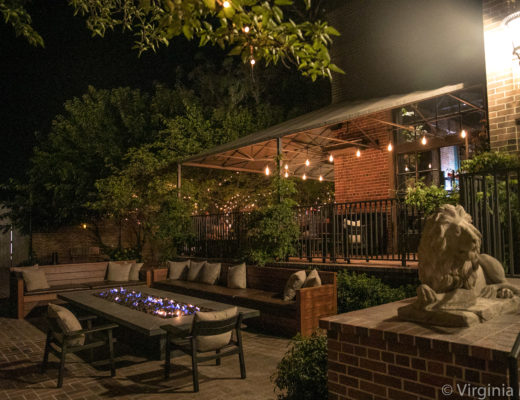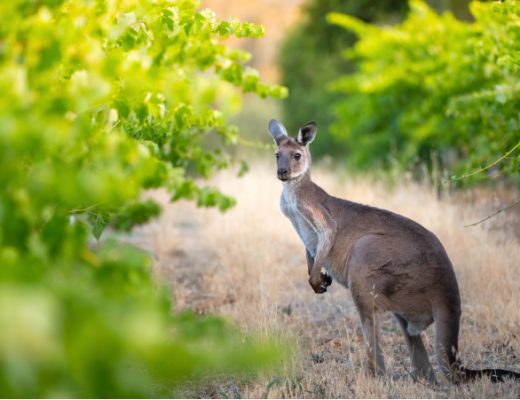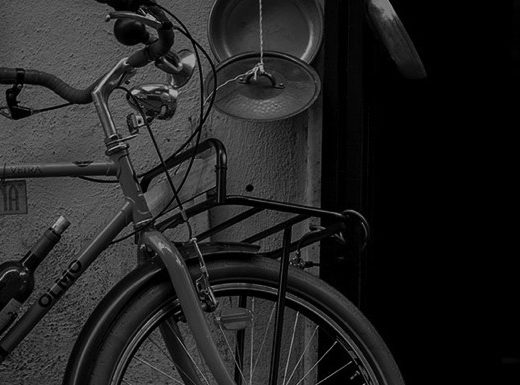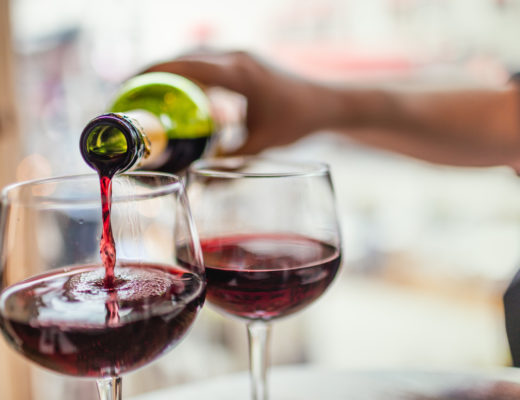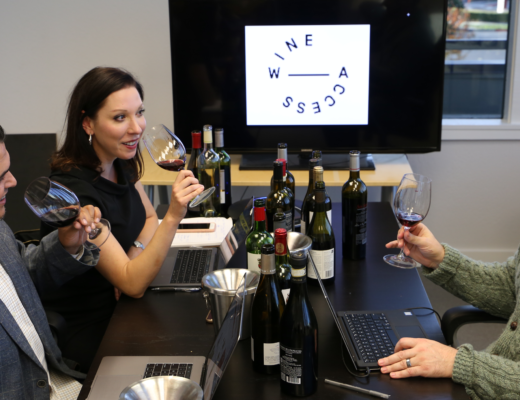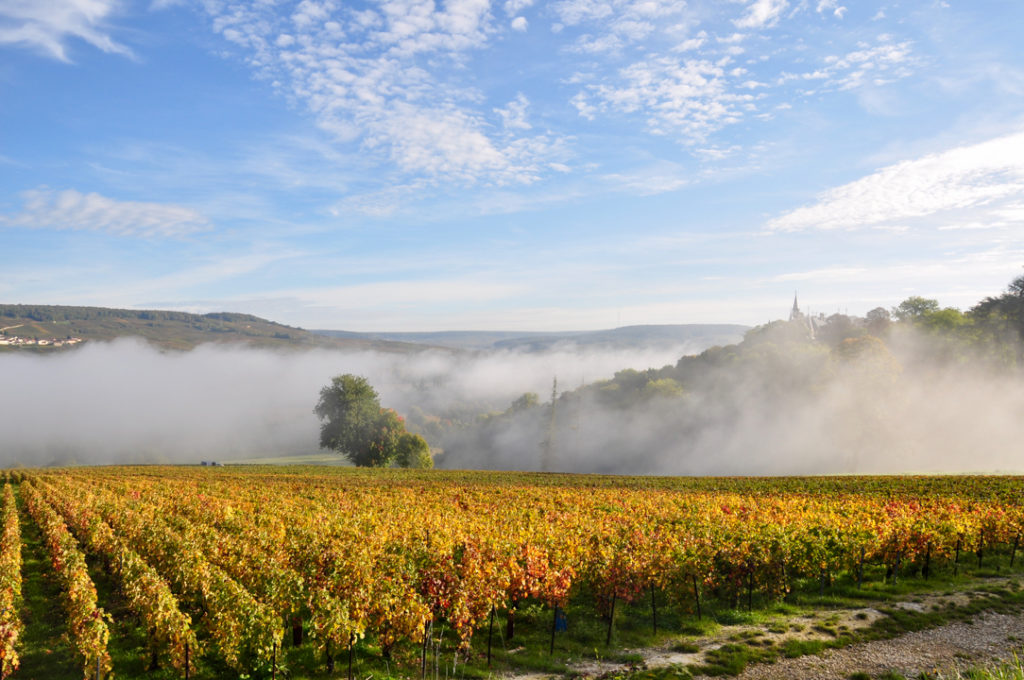
Morning fog over Champagne vineyards. Image by Sherry Stolar.
story by Sherry Stolar
There’s a mural in Reims, France that depicts the Champagne production process from start to finish. Between each panel, there are columns, each with a stone bust at the top conveying one of the emotions experienced after drinking Champagne: Joy, Love, Genius, and Courage.
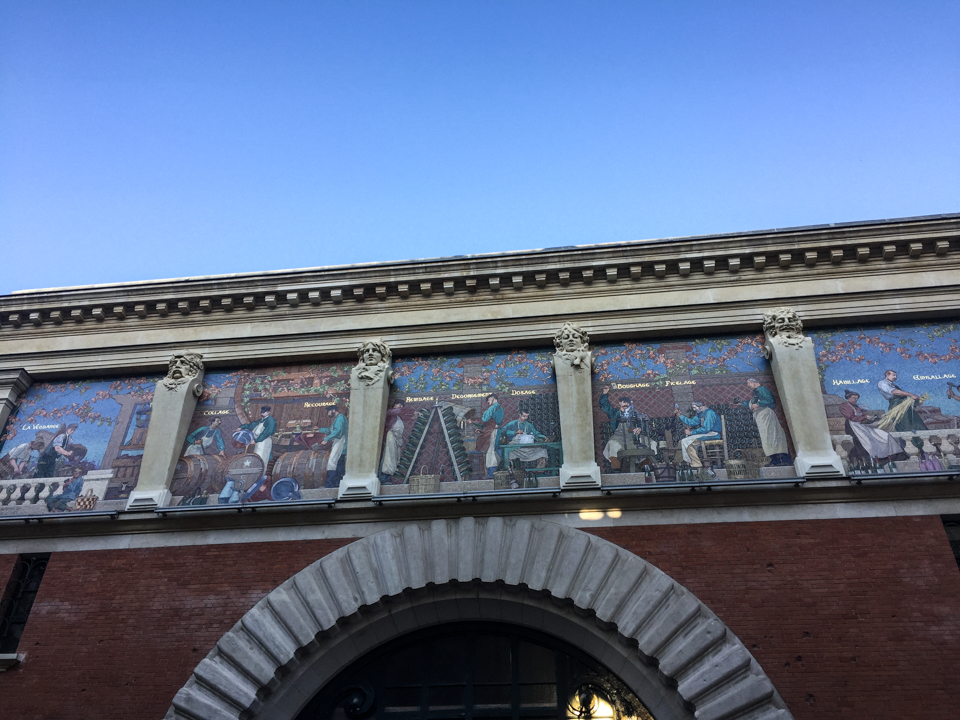
Mural in Reims, France. Image by Sherry Stolar.
Perhaps genius and courage are stretches, but there’s no question that we equate Champagne with joy and love. Think of any milestone you’ve celebrated in the past few years. A new home. A wedding. A baby. A winning sports match. How many of these were commemorated by popping a bottle of Champagne?
Yet, despite our undisputed taste for Champagne and the positive emotions it brings us, most of us know very little about it. Read on for a brief introduction to the world of Champagne. With deeper understanding, joy and love may just be accompanied by strokes of genius and courage at your next celebration!

Glasses of Taittinger ready to toast. Image by Sherry Stolar.
First and foremost, Champagne is a place.
Champagne is the name of a wine-producing region in northeastern France, only an hour’s drive from Paris (and under an hour by high-speed train). Only sparkling wines from this region can carry the Champagne name. So if you’re having a sparkling wine from elsewhere, say Spain, South Africa or California, it can’t technically be called Champagne — even if it’s made in the same way with the same grape varieties. (A few “grandfathered” exceptions can still be found.)
Champagne is divided into five major regions, each of which has its own unique soil types and specializes in specific grape varieties. The region’s two main hubs, Reims and Épernay, are where you’ll find the names you know and recognize — such as Moët & Chandon, Taittinger and Mumm — but when you get out of the villages you’ll find many interesting “grower Champagnes,” or small-family owned operations (récolteurs manipulants in French).
There are only 7 permitted grapes within the Champagne region.
While there are various styles of Champagne (see the list at the bottom of this article), all wines within the Champagne region are permitted to be made with seven grapes: Pinot Noir, Pinot Meunier, Chardonnay, Pinot Gris, Pinot Blanc, Petit Meslier, and Arban. The blend is a producer’s choice, but the way in which Champagne is made is a method that has been followed for centuries, known as the Traditional Method or Méthode Champenoise.
Champagne gets its bubbles from a secondary fermentation (not carbonation!).
Champagne starts as a still wine, to which is added a mixture of sugar and yeast. The bottle is sealed and, as the sugar and yeast interact to produce alcohol and carbon dioxide, the carbon dioxide gets trapped in the bottle, creating bubbles. The now sparkling wine is aged in bottle for a minimum of 12 months on the lees, although most are aged longer. The longer the wine is aged on its lees, or dead yeast cells, the more complex aromas and flavor profiles result (wines with longer lees aging often express what are known as autolytic notes of bread, brioche, toast, etc.).
By a process known as riddling the bottle is slowly turned upside down — by hand traditionally, but more commonly by machine today — sending the dead yeast cells to the neck of the bottle. The neck of the bottle is then flash-frozen, and the clump of yeast cells pop out when the bottle is opened and pressure released. The bottle is re-sealed with a new cork, at which time a sugar mixture, the dosage, is added to reach desired sweetness. Unlike still wines, sugar can be added to Champagne to sweeten at the finish. The wine is then aged further before release, depending on style.
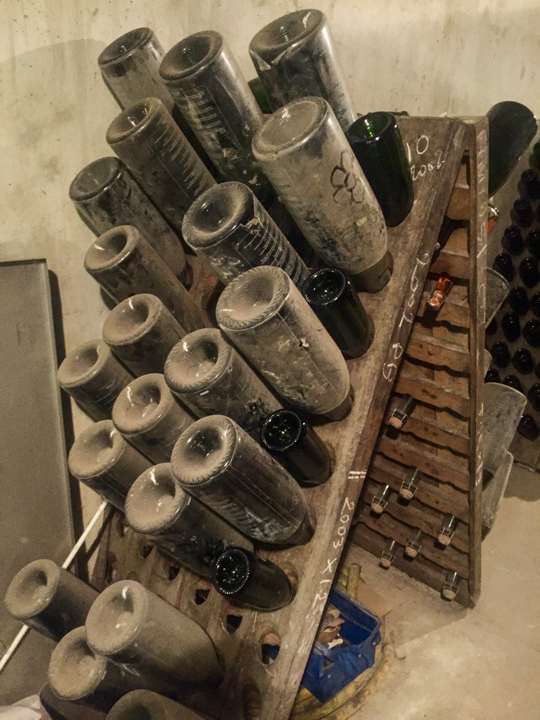
Champagne resting on riddling racks at Champagne Brugnon. Image by Sherry Stolar.
There are other ways to produce sparkling wines elsewhere in the world, where the wines undergo a secondary fermentation in a pressurized tank or are transferred from one bottle to another, but these are not permitted methods in Champagne. (The former is how Prosecco is made).
The names you know aren’t necessarily the best (or most interesting).
Most big Champagne houses don’t grow enough grapes to support their production levels, so they also purchase grapes from local growers to supplement. Moet & Chandon is the largest grower in Champagne, yet can only grow 25 percent of its needs, so 75 percent of its grapes are purchased from other growers.
Contrast this with smaller, independent houses, such as Champagne Le Gallais, run by the powerful female winemaker Charlotte Morgain Le Gallais. Le Gallais is a 5th-generation winemaker, inheriting a mere 9.8 acres of plantings (90% Pinot Noir and the rest is Pinot Meunier). Whereas the big houses are looking for a consistent style year after year, Le Gallais strives to let the harvest speak for itself.
“The personality of our land comes out of this operation,” says Le Gallais. “If we try to do something quick, we will lose this.”
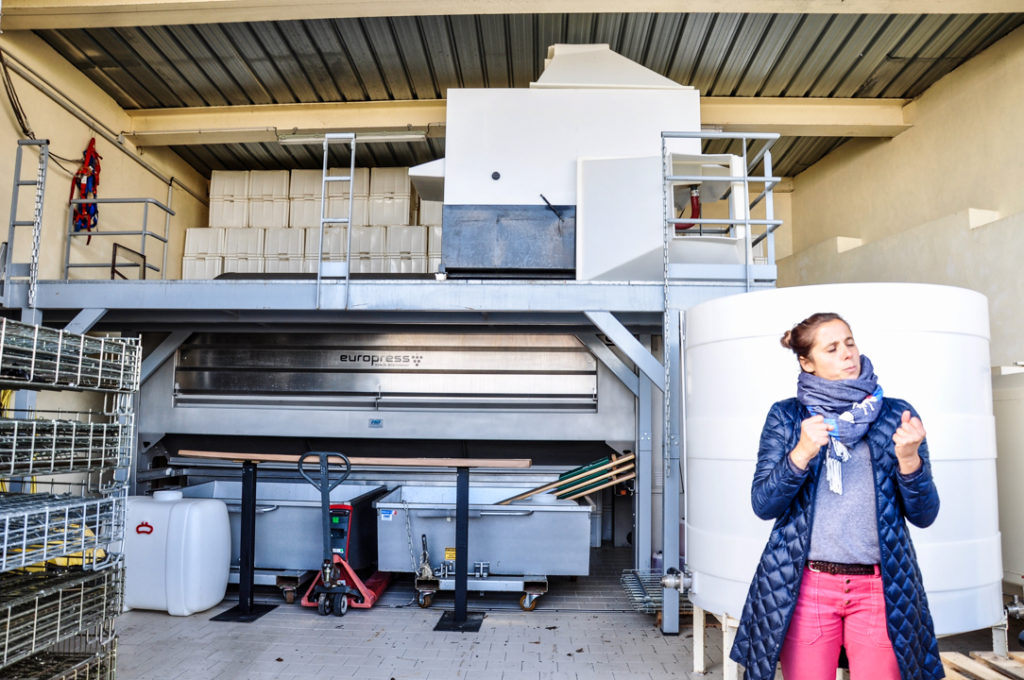
Winemaker Charlotte Morgain Le Gallais describing the winemaking process at Champagne Le Gallais. Image by Sherry Stolar.
I recently traveled to Champagne from my home in London — for a celebration, of course: my birthday. In addition to visiting some of the better known Champagne houses, including Moet & Chandon and Taittinger, we spent time at Champagne Le Gallais. My favorite bottle there was the Champagne Le Gallais Brut Nature Cuvée des Cèdres NV, which has no sugar added at the finish, and had a rich, ripe nose, with bruised apple, brioche and bright acidity on the palate with a slightly smoky finish.
We also paid a visit to another grower, Champagne Philippe Brugnon, helmed by the man of the same name. Located a few minutes outside of Reims in the charming village of Rilly la Montagne, Brugnon combines grapes from Rilly and nearby village Écueil to craft Champagnes of bright acidity and fresh fruit flavors. The Champagne Brugnon Cuvée Élégance NV, a blend of 70% Chardonnay and 30% Pinot Noir, has a beautiful nose of tart red apple, vibrant acidity and full body.
Brugnon also provides a unique opportunity to join the Golden Sabre Brotherhood, a society of individuals who have successfully sabred a bottle of Champagne: opening a bottle by slicing the top off with a large knife! I felt joy and love for certain as I sabred my first bottle of Champagne under Brugnon tutelage, and — for the first time — the genius and courage that only Champagne can impart.
Champagne Styles
- Non-Vintage or Multi-Vintage: Most of what you see is this, a consistent year-over-year “house” style that’s a blend of multiple grapes and vintages. Must be aged for 1.5 years before release. Signaled by the abbreviation “NV” or “MV.”
- Vintage: As the name suggests, this is a release from a single harvest, or vintage. Requires longer aging: 3 years before release.
- Blanc de Blancs: A Champagne made from only white grapes (Chardonnay).
- Blanc de Noirs: A Champagne made from only red grapes (Pinot Noir and Pinot Meunier).
- Rosé: Unlike still rosé, rosé Champagne is typically made by blending in red wine before the second fermentation, though some producers opt for the saignée, or bleeding, method.

